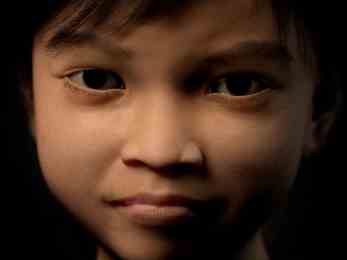THE TAKE AWAY
Virtual Child Sex Trafficking
Is it Wrong?
By Kersley Fitzgerald


One page/printer friendly

The original purpose of the internet was so academics could have easier access to each other and the research available in their field. By the end of 1969, there were four computers linked together. By the late 80s, before the internet was available to the public, users were sharing low-quality scanned pornographic images.
The internet has been a major source of pornography ever since. Developments include:
- Higher-resolution images
- Text-based sex-chatting
- Simulated acts in Massively Multiplayer Online Role-Playing Games (MMORPGs) — both games that are designed for more general purposes and games that are specifically created for such activities
- Solicitation on sites like Backpage and Craig's List
- Sites where users can "rate" different prostitutes
- Video sex-chatting
- Real-time video-based prostitution wherein the user can interact with and direct the prostitute via text or voice (virtual sex tourism)
Within these never-ending cans of worms are some controversial legal and ethical ramifications that our culture is having to deal with. Many individuals displayed on-line are held under the qualifications of sex trafficking, which is against international law. Many images are taken without the consent of the subject, which is illegal. And many subjects, in all formats, are children, which is also against international law. It is obviously ethically wrong to enslave someone; it is obviously ethically wrong to use an image of someone who hasn't given their consent; and it is obviously ethically reprehensible to do either with children.
The latter is what motivated the international humanitarian organization Terre des Hommes ("land of the people") to run an undercover operation to weed out pedophiles across the globe. They offered Sweetie, a young Filipina girl, for webcam child sex tourism. Over 1000 people from 65 different countries took the bait within less than two-and-a-half months. The identifying features of these users have been passed on to the authorities of their respective countries.
The thing is, "Sweetie" never existed. She was an adult staff member manipulating a virtual, animated cartoon. The graphics were so good the users didn't know the difference.
This opens a huge can of worms. If a Dutch human rights charity can gather the resources to create a lifelike avatar, surely the sex industry, with near limitless resources, can do the same. We know that the world of trafficking is filled with abuse, violence, forced drug-use, and murder. But if online webcam tourism replaces real children with computer animated avatars, will this part of "the world's oldest profession" truly become a victimless crime?
Is the sexual exploitation of children wrong because it harms children or because it's wrong to sexualize children? Is there a fundamental difference between using a child and using a surrogate that has the appearance of a child?
Different legislative bodies give different answers. Possession of virtual child pornography gets up to five years in prison in Germany. In Victoria, Australia, media that "describes or depicts a person who is, or appears to be, a minor engaging in sexual activity or depicted in an indecent sexual manner or context" is illegal. Sweden also prohibits virtual child pornography. From "Crime and Policing in Virtual Worlds" by Marc Goodman:
Across the world, government legislatures are answering this question differently. In Germany, Ireland and many other European countries the possession of "virtual child pornography" is considered the legal equivalent of possessing "real" child pornography and is equally punishable by law. In the United States the courts have ruled that "virtual" child sex depictions are a form of fantasy and, as such, they do not constitute criminal behaviour because no actual child was ever abused or photographed in the production of those virtual child abuse images.Is virtual child pornography obviously ethically wrong, as some nations say? Is it wrong if it harms no child, if the child doesn't exist, and the entire operation can be reduced to an animation algorithm?
Eneman, Gillespie, and Stahl, in their paper "Criminalising Fantasies: The Regulation of Virtual Child Pornography," put it succinctly:
While most people agree that child pornography should be illegal there are critical voices raised about the criminalisation of virtual child pornography that does not demonstrate a direct link of harm to children (Williams, 2004). One of the main arguments in the debate regarding this issue is whether it is appropriate for the law to regulate peoples fantasies and imaginations through the creation of a "thought crime" (Home Office, 2007) or whether this is a threat to the individual's privacy and right of freedom of expression.

Continue to Part 2
Photo: Sweetie
Tags: Current-Issues | Political-Issues | Sin-Evil
comments powered by Disqus
Published 1-7-14

